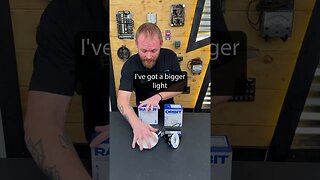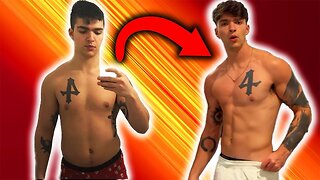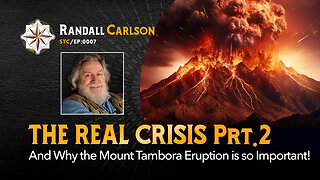Compression and Raintight: What's the Difference?
Join this channel to get access to perks:
https://www.youtube.com/channel/UCB3jUEyCLRbCw7QED0vnXYg/join
As electricians, we all know the difference between set screw and compression fittings for EMT conduit. But did you know that there are specifically compression fittings that are required for outdoor/wet locations? In the latest episode of electrician U, Dustin talks about the differences between compression and wet listed compression.
🤘⚡️MEMBERSHIP⚡️🤘
JOIN ELECTRICIAN U - become a member and get:
FREE Continuing Education every year
FREE Practice Exams
FREE Monthly Video Courses
FREE Weekly Live Instructor-Led Classes
FREE Monthly Educational Newsletter
Premium Members-Only Content
Private Discord Channel
Monthly Members-Only Discord Chats
Sign up here --- https://www.electricianu.com/electrician-u-membership/
🎧🎹MUSIC AND VIDEO:🎹🎧
https://www.facebook.com/descantmv
🎬✍️ART AND ILLUSTRATION:✍️🎬
https://www.daverussoart.com
Set screw fittings rely on a single point of contact (via the set screw) to secure itself to the conduit. Compression fittings rely on pressure all the way around the conduit provided by the locking ring inside the connector being compressed by tightening the shoulder of the connector or coupling. For years, these were touted by the industry and manufacturers as being listed for use outdoors and/or for wet locations. But fairly recently, studies showed that the standard compression did NOT make for a waterproof installation and something else was needed!
While the overall appearances of a standard compression fitting and a raintight compression fitting are similar, there are differences. First is the outside. While some of the raintight fittings are color coded, many of them have a stamp on the fitting itself that says raintight or ok to use in wet locations. There is also a couple of additional gromets to prevent water intrusion. One located on the outside of the connector behind the locknut (preventing water from entering the enclosure at this point) and another nylon ring on the inside that prevents water from entering the installation when the shoulder nut is tightened on the connector or coupling.
There are several NEC references requiring the usage of raintight compression fittings, but many electricians may have to read into the differences of the two types of connectors. Article 358.42, 314.15, 225.22 & 230.53 in a nutshell state that the installation (and therefore the fittings used) shall be LISTED for use in wet locations.
For years, we used standard compression fittings in outdoor locations as most of us didn’t know any better or were unaware of the raintight ones. But, with inspectors cracking down these days (coupled with the fact that THEY are fully aware of the NEC requirements) you will most assuredly fail an inspection if the standard compression fittings are used in an outdoor/wet location! Make sure you are specifying the raintight fittings when ordering your materials from the supply house, and make sure you are int\stalling them where required!
We hope this has been an insightful look into the world of raintight compression fittings. Is there a topic you would like to see a video of? Leave a comment in the comments section and let us know. please continue to follow Dustin and Electrician U as we are constantly updating our content to assist our followers in becoming the best electricians that they can be.
-
 0:50
0:50
Electrician U
5 months agoWhat Are Lumens?
11.6K4 -
 26:18
26:18
Stephen Gardner
6 hours agoTop Republican UNLOADS on Democrats and Biden's MENTAL HEALTH!!
37.5K58 -
 44:30
44:30
Michael Franzese
2 days agoCancel Culture Backlash of My UK Tour | Michael Franzese
95.8K49 -
 35:12
35:12
Island Hopper TV
1 day agoFull Costa Rica Travel Guide 2024
55.8K33 -
 4:43
4:43
ParisDemers
1 day agoThis Diet Hack Changed My Life! (How To Get Ripped FAST!)
69.8K29 -
 46:57
46:57
Crime Circus
1 day agoApple River ST*BBING!! Stand Your Ground Interrogation of Man in Wisconsin
78.9K45 -
 9:39
9:39
Tactical Advisor
1 day agoHow To Improve Your Shooting For FREE! Mantis Blackbeard X
92.4K15 -
 1:00:59
1:00:59
Squaring The Circle w/ Randall Carlson
1 day ago#007 The Real Climate Crisis Noone Is Talking About and Mount Tambora Pt 2
95.5K27 -
 13:52
13:52
America Uncovered
1 day agoEveryone is WRONG About Trump's Guilty Verdict
73.8K140 -
 13:10
13:10
Censored TV
1 day agoThe Owen Benjamin vs Jim Goad debate was WILD
73.8K52